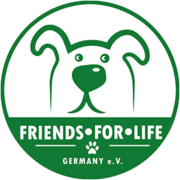 Most dogs are prepared for the cold sub-zero temperatures in winter. Many of our furry friends love to romp in the snow, but the cold season still poses challenges for our four-legged friends.
Most dogs are prepared for the cold sub-zero temperatures in winter. Many of our furry friends love to romp in the snow, but the cold season still poses challenges for our four-legged friends.
What should you pay attention to in winter?
For example, removing lumps of ice from paws when walking is very important. Especially in long-haired dogs, lumps of ice easily form between the pads. These should be removed during walks as they prevent the dog from walking. Road salt is also a big problem, especially for city dogs. It attacks the paws and burns unpleasantly. This can be counteracted by regularly rubbing Vaseline, milking fat or special dog paw creams on the paws. After every walk, please wash your paws with warm water so that the road salt does not affect the sensitive paws.
Can my dog eat snow?
 Many dogs love to eat snow. Unfortunately, this can be detrimental to the health of the animal, since four-legged friends react very differently to snow absorption. If the dog eats too much of it, it can irritate the throat and stomach. Although some dogs have no problems even with large amounts of snow, others then show symptoms of what is known as snow gastritis very quickly. This is an acute inflammation of the gastric mucosa, which can be caused by the eaten snow. Contaminated snow in particular irritates the dog’s mucous membranes and may cause some of the typical symptoms of snow gastritis:
Many dogs love to eat snow. Unfortunately, this can be detrimental to the health of the animal, since four-legged friends react very differently to snow absorption. If the dog eats too much of it, it can irritate the throat and stomach. Although some dogs have no problems even with large amounts of snow, others then show symptoms of what is known as snow gastritis very quickly. This is an acute inflammation of the gastric mucosa, which can be caused by the eaten snow. Contaminated snow in particular irritates the dog’s mucous membranes and may cause some of the typical symptoms of snow gastritis:
- Saliva
- Vomiting
- Diarrhea
- Gagging & cough
- Fatigue
If these symptoms occur in your dog, it is advisable to observe the fur nose closely. If your dog appears weak and battered, or if you find blood in the stool or vomit, visit the vet immediately. If you feel unwell, it is often sufficient to offer the dog bland food for a few days.
Then the thing with the heating air
Who doesn’t know how to turn up the heating after a hard day’s work or a long walk so that it gets comfortably warm. However, dry heating air is not healthy for either humans or animals. The warm air quickly dries out the skin and mucous membranes of your fur nose. Conjunctivitis, breathing difficulties and, in the worst case, tracheitis can be the result. On the other hand, a bowl of water that you put on or near the heater can help. The water, which should be changed daily, evaporates and humidifies the air. Hanging up wet laundry has the same effect, and regular airing also helps to exchange the air in the room.
Be careful in the dark
 Now in the winter months it is dark in the mornings and evenings during the first and last walks. But for dog owners, the four-legged friend wants and should go outside. If you then have to walk along a street to lawns or similar, it gets stressful. Especially if you have a dark-colored dog, you can assume that other road users will either not see it or see it too late. That can be dangerous!
Now in the winter months it is dark in the mornings and evenings during the first and last walks. But for dog owners, the four-legged friend wants and should go outside. If you then have to walk along a street to lawns or similar, it gets stressful. Especially if you have a dark-colored dog, you can assume that other road users will either not see it or see it too late. That can be dangerous!
This is why actively glowing rings or necklace pendants are not just a fashionable gimmick this time, but are strongly recommended. To ensure security in the dark months, you should definitely use it. Incidentally, this applies not only to dark-colored dogs, but generally to all four-legged friends. The person walking the dog should also dress appropriately. Reflective vests etc. are actually mandatory. A leash that reflects is also useful. In this way, other road users can see from afar that dogs and humans are connected. This is particularly important when the four-legged friend does not walk directly on the man/woman.

The content of the articles is for general information purposes only and does not replace diagnosis or treatment by a veterinarian. Reviews or testimonials are individual reports from verified customers. This information does not constitute medical advice and should not be understood as such.
Our daily inspiration comes from the special moments with our dogs. Here we share this enthusiasm and invite you to become part of the DOG FIT community on our social media channels.


Leave a Reply